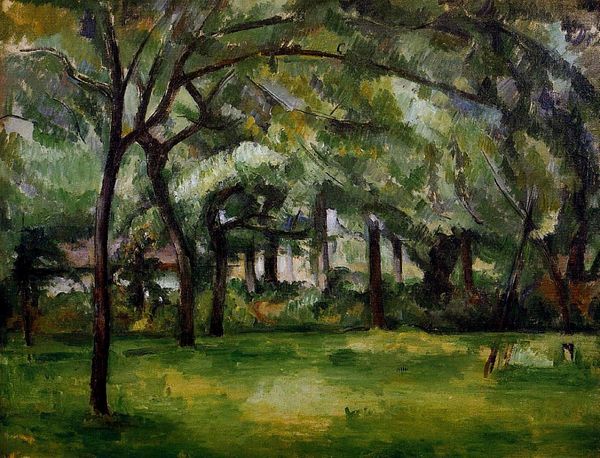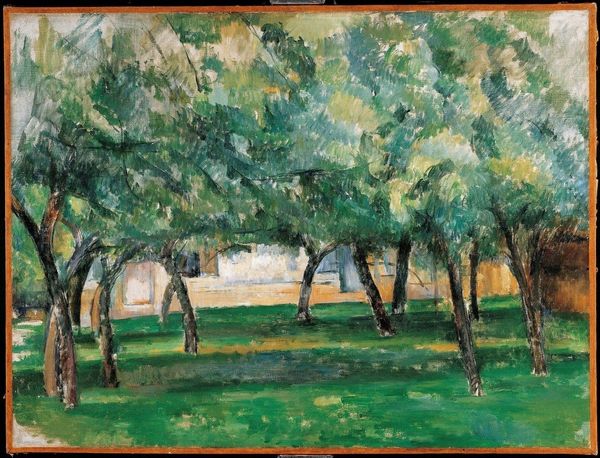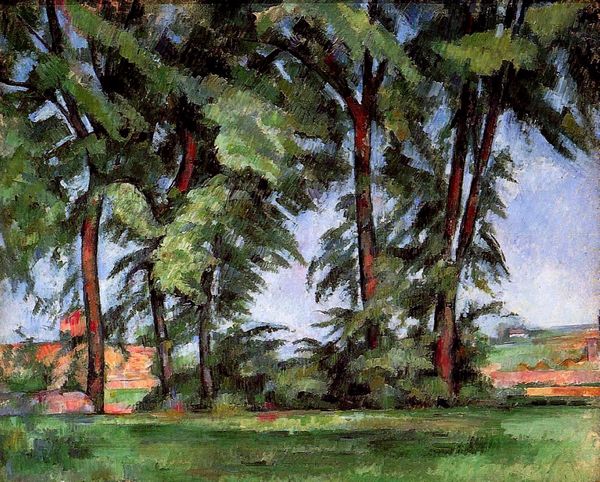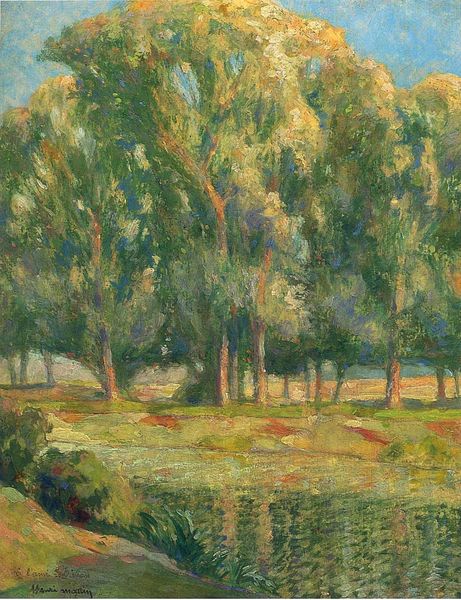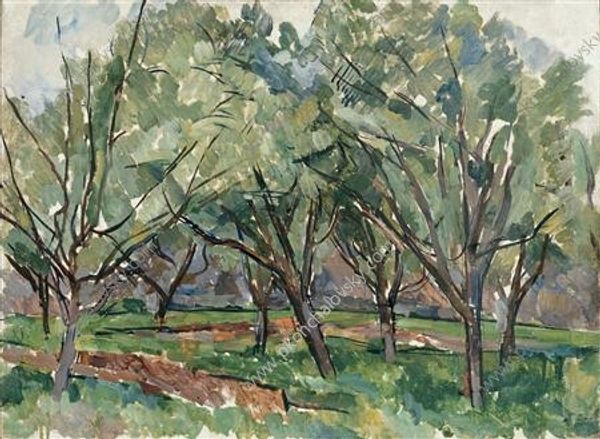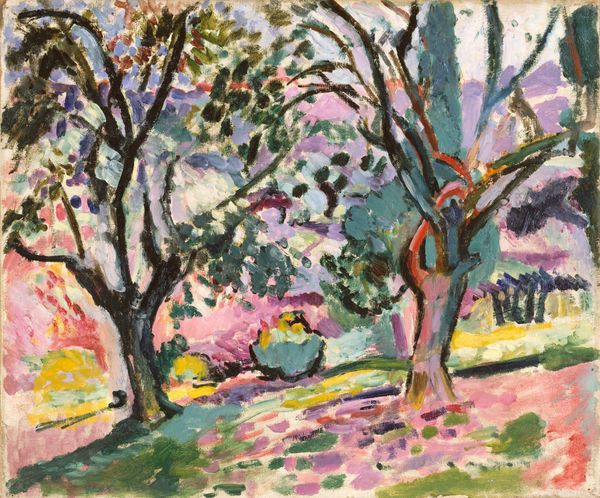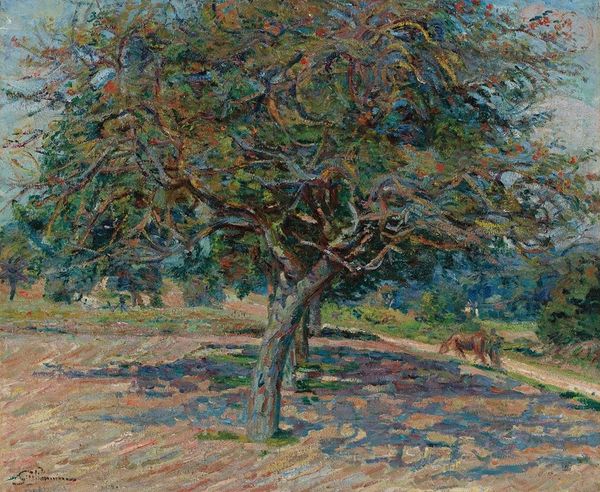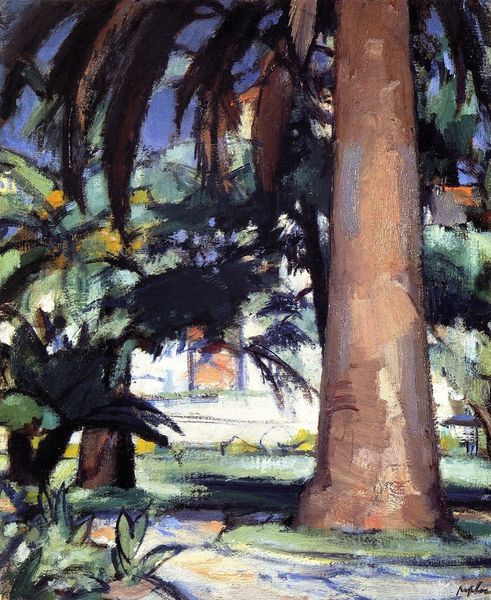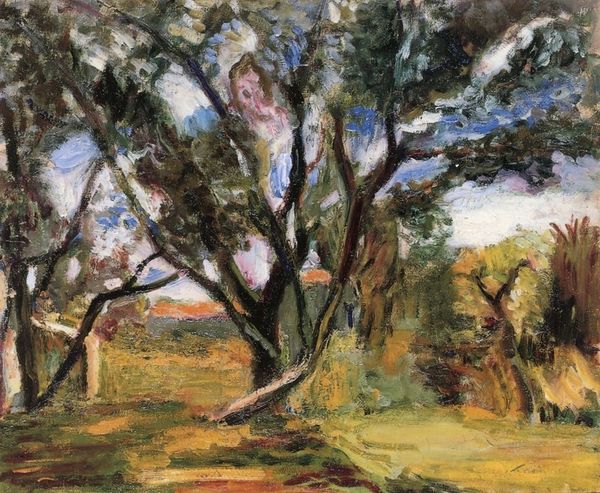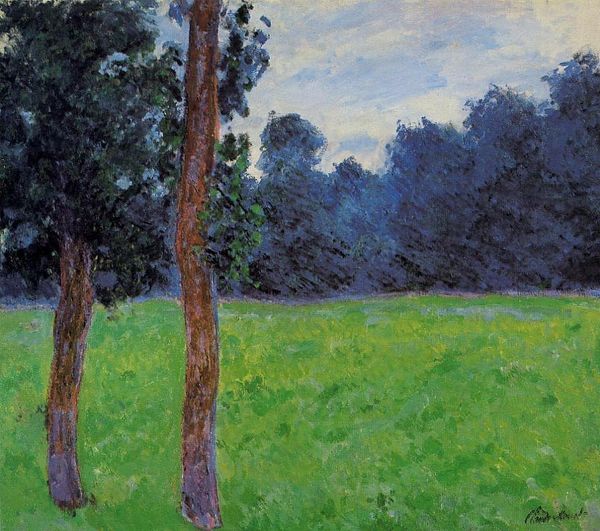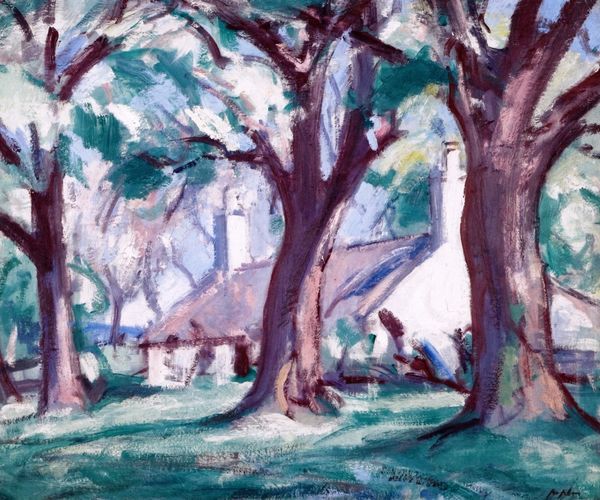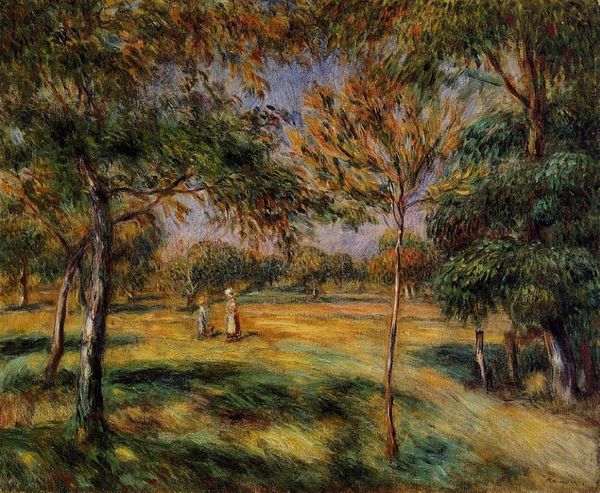
painting, plein-air, oil-paint, impasto
#
tree
#
organic
#
painting
#
plein-air
#
oil-paint
#
landscape
#
nature
#
impasto
#
post-impressionism
#
nature
Copyright: Public domain
Editor: This is Paul Cézanne's "A Close," painted around 1890 using oil paint, likely en plein air. There's this incredible sense of being enveloped by the trees, almost like stepping into another world. What do you see in this piece, especially considering the time it was created? Curator: It’s a powerful representation of nature, yes, but think about what it *excludes.* Cézanne painted this at a time when industrialization was rapidly changing the French landscape. How might this painting function as a kind of visual resistance to those changes, a deliberate act of aesthetic preservation? Consider the public's desire for pastoral imagery, and how artists like Cézanne negotiated those desires alongside their artistic goals. Editor: So, it's less about simply painting a pretty landscape, and more about making a statement about what's being lost? Curator: Exactly! He isn't just documenting nature; he’s actively shaping our perception of it within a rapidly changing society. And who gets access to these visions? Where are they displayed, who funds them, and how does that shape their meaning? These paintings, exhibited in bourgeois salons, arguably catered to a specific yearning for the rural idyll amongst the very people benefiting from industrial advancements. Doesn't that create a certain tension? Editor: That makes you think about the elite owning these kinds of paintings during that era, and how those views may be blind to lower class people who are experiencing it in an everyday context. Curator: Precisely. It's about examining the broader cultural landscape that both produced and consumed this image. Editor: Wow, I'll never look at a landscape painting the same way again. Thanks for sharing your thoughts! Curator: My pleasure. Art reflects and shapes the world; seeing those connections is the most fascinating part.
Comments
No comments
Be the first to comment and join the conversation on the ultimate creative platform.
